May wasn’t quite the start of the early summer we experienced last year, but we kicked off with wines which at least helped to make it feel like one. Will the wines still be this good out of Lockdown? I hope so, but then we might just be heading for a “third wave” so it’s just as well the cellar is well stocked. We began on 1st May with a sensational English sparkler from a much-maligned grape variety. Moving on, we visited Slovakia, Australia’s Adelaide Hills, back to England, then over to Savoie. The first half of the month concluded with a rare but welcome trip to the Languedoc, another of the increasing number of wonderful Palomino table wines coming out of Southern Spain, then ended with a nicely aged Cabernet Franc from the Loire.
SEYVAL BLANC “CUVÉE JACK PIKE” 2015, BREAKY BOTTOM (Sussex, UK)
Peter Hall planted Breaky Bottom by hand in 1974, so it was one of the first commercial small artisan vineyards in England. It is blessed with a truly beautiful location, nestling in a fold in the South Downs, between Brighton and Newhaven. As you stand on the South Downs Way walking path you look down on the farm, and over the ridge beyond to the sea, just less than two miles away. The vineyard consists 6 hectares on chalk in the South Downs National Park, on land shared with a small herd of forty sheep.
Peter and Christina Hall were pioneers of Seyval Blanc long before the Champagne varieties became the chosen grapes for English Sparkling Wine. Whilst Peter makes equally enthralling wines from those varieties, which all seem to share a house style of lacelike fruit and mineral acidity, I have only once tasted a Seyval Blanc sparkling wine which approaches this one in quality, though quite different (one made by Tim Phillips, and I only tried it a few days ago…but more of that another time).
This is a traditionally bottle-fermented wine, aged on lees, with almost the colour of elderflower cordial, no doubt psychologically precipitating the lovely floral elderflower bouquet. The palate shows fresh apples with a hint of confit lemon. It has a sharp focus but overall is very light on its feet. This is a wine to pour blind for the traditionalists who really don’t rate Seyval Blanc (since they tried one acidic still wine in 1989, you know how the story goes).
Butlers Wine Cellar (two Brighton shops and mail order/web sales) usually stocks the widest selection of Breaky Bottom wines I’m aware of in the UK, aided by their close relationship with the Halls.
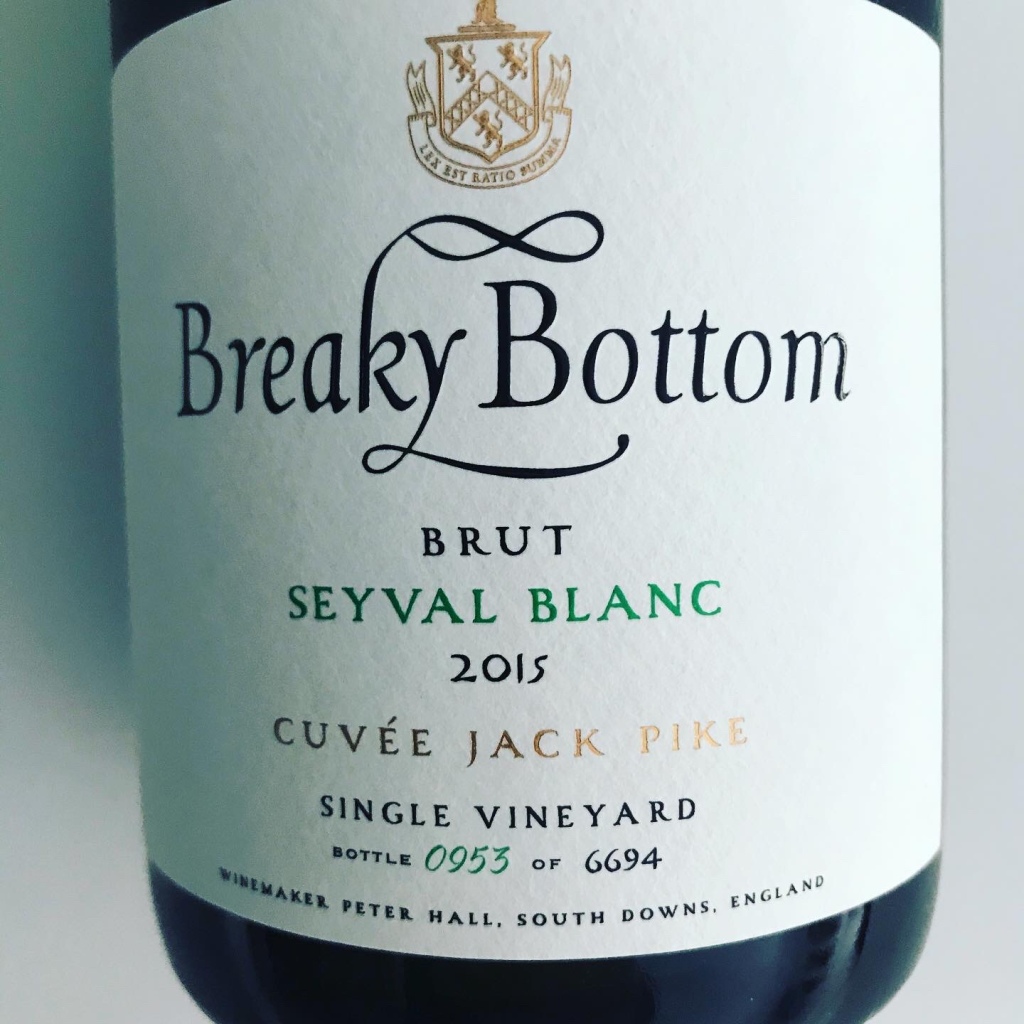
“CARBONIQ” 2019, VINO MAGULA (Lower Carpathians, Slovakia)
I love the wines of Magula, but I do reckon they have upped their game in the last couple of vintages. Both Czechia and Slovakia are making truly exciting wines which seem ready to break through beyond the cool bars of the UK’s metro areas, with a few more journalists waking up to them. Although good packaging doesn’t make a wine taste better, I do appreciate the effort they have put into adding a little more interest to their already striking labels (a cut-out vine driving deep into the earth to seek nutrients).
Magula is a ten-hectare family farm at Suche Nad Parnou in the Lower Carpathians. The family farm biodynamically on mainly loess soils with a high mineral content. Very low rainfall in this valley forces the vines to go deep, and they have a rugged side, balanced by the fruit purity of biodynamics.
Carboniq is a lowish alcohol (10.5%) red made from the Modry Portugal variety (aka Blauer Portugieser), one which can make surprisingly juicy wines (see Staffelterhof etc in Germany) but is another grape woefully underestimated by the traddies. It makes a pale but vibrant red here, scented with pure red fruits (red cherry, strawberry), with classic “whole berry” juice. The good acidity makes this very refreshing, and there’s just a little bite on the finish. It makes a great lunchtime red, not that you can’t drink it anytime (I mean, at 10.5% it might go well with a cooked breakfast?). Altogether, amazing value too, at £19.
UK importer is Basket Press Wines.

RAINBOW JUICE 2019, GENTLE FOLK WINES (Adelaide Hills, South Australia)
Gareth Belton has had an interesting career progression. Born in South Africa, he came to Australia in his teens on a tennis scholarship of all things, but ended up as a marine biologist before being afflicted by the winemaking bug. He farms 11 hectares in and around the Basket Ranges, purchasing additional grapes from friends. He follows biodynamic processes, and unusually for Australia (but not in the natural wine fraternity) all his vines are unirrigated.
Rainbow Juice originally came from a single site co-planted with 21 varieties, but these days it comes from a wider spread of sites. Some of the older vine stock is over forty years old. Both red and white varieties go into the blend, with a focus on Pinot Noir, Sauvignon Blanc, Pinot Gris, Chardonnay, Merlot, Syrah and Gewurztraminer (among a very long list). The white varieties get a three-week skin maceration and the red varieties are lightly pressed to give the wine its Rosé colour. Fermentation is described as “rolling”, with grapes added as they come in.
That colour is a darker pink with some orange or copper glints. The colour would be described by Rosé traditionalists, and those focussed on what the market seems to lap up, as “Non-commercial”. The wine is dry yet juicy, with grapefruit and other citrus aromatics. The palate is more around the mandarin spectrum with a little texture from the skin contact (but not too much). All this makes for a delicious glugging pink with a lot more interest than many. So tasty.
This bottle came via Littlewine.

“PERFECT STRANGERS”, BRUT NATURE CIDER, CHARLIE HERRING WINES (Hampshire, UK)
Tim Phillips makes this artisan cider from the apple orchard adjoining his beautiful paradise of a walled vineyard near Lymington in Hampshire. He adds a dash of his red wine to colour it (although now he’s switching from this to using skins), and of all the fine English Sparkling Ciders I know, this is the most vinous. In fact, Tim told me recently that his UK agent said it could almost be a fine Grower Champagne, and that’s what you get.
The first thing that comes over is a remarkable spine-tingling freshness, backed with very fine tiny bubbles. Although one can push the sparkling wine analogy a long way here, the apples definitely tell you it’s cider, just cider with an extra dimension. Taut and tantalising, but sadly (as with anything Tim produces) hard to source.
This was my last bottle. I managed to secure just one from the 2020 vintage, the remainder going straight to Les Caves de Pyrene. I understand they sold them through pretty much immediately, but there should be a few bottles knocking around in the Indie retail sector and restaurants. Grab one if you spot one. It’s fine…like fine wine…and different.
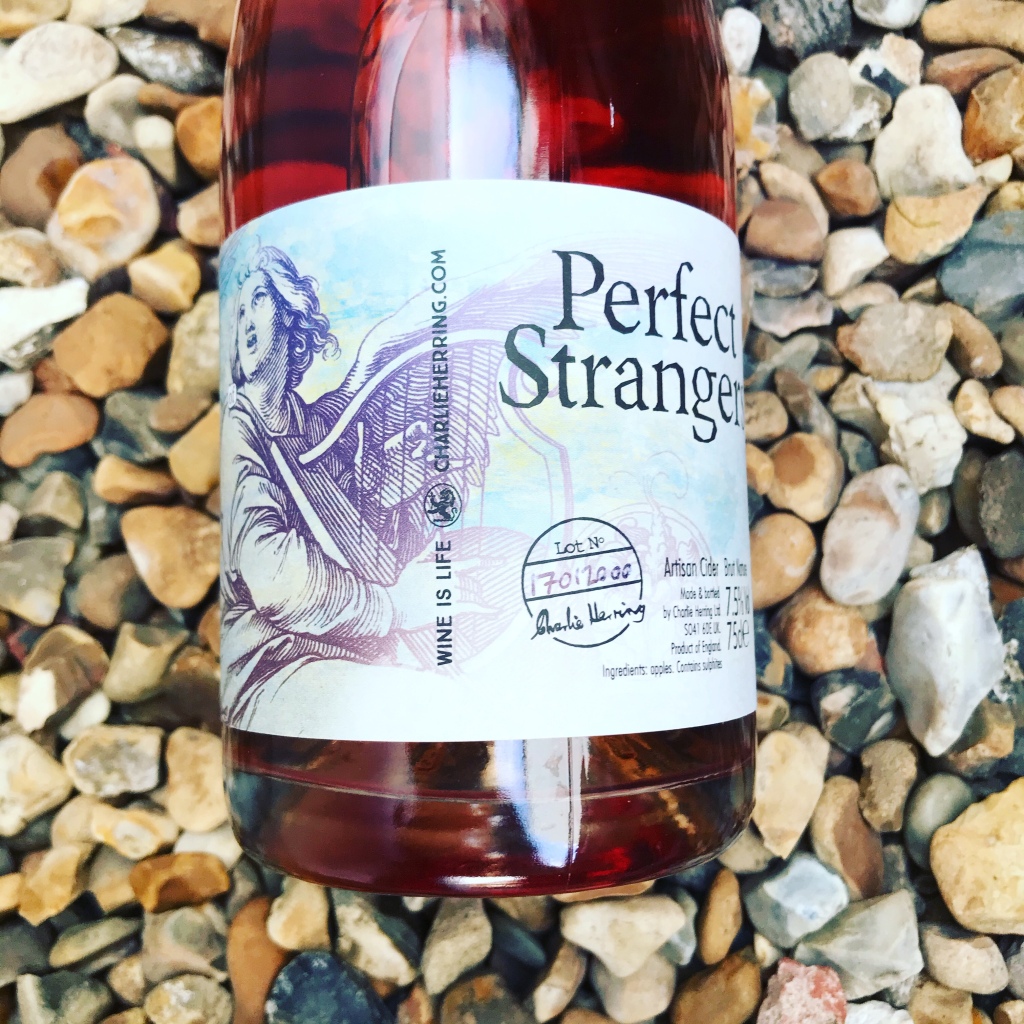
ALTESSE “LA PIERRE MARQUÉE” 2019, ROUSSETTE DE SAVOIE, DOMAINE SAINT-GERMAIN (Savoie, France)
This 15-hectare domaine (grown from 3.5 hectares back in 2001) is at St-Pierre d’Albigny, east of Chambéry on the Combe de Savoie. There is a mere two-hectares of Altesse planted, the traditional white variety of the Combe. The domaine has been run since 2001 by Raphaël Saint-Germain, who studied plant biology, but winemaking is in the hands of Fabrice Bouché. He follows a progressive, low intervention route using indigenous yeasts and carbon dioxide injected into the tanks as a means to protect the juice and minimise the addition of sulphur.
The result with this Roussette is a classically mineral profile unhindered by adulteration. The bouquet is herbal but the palate, whilst fresh, is a little unexpected. I would fancifully describe it as (please indulge me) like licking honey-coated stewed apple from a stone. These wines are very good and excellent value, from an estate which flies below the radar of those seeking the more fashionable names of Savoie.
Wink Lorch, in Wines of the French Alps (Wine Travel Media, 2019) suggests that the white wines from this domaine develop well over a few years, and tasting this bottle bears that out. You just sense that whilst right now it’s lovely and fresh (and only 12% abv), it does have more potential to round out and develop, especially the nose.
Imported by Alpine Wines, purchased from Butlers Wine Cellar.

“LA BUVETTE À PAULETTE” 2019, MAS COUTELOU (Languedoc, France)
Jeff Coutelou (who can now no longer use “Mas” on his non-AOP Languedoc wines) seems to have an uncanny ability to make some very serious natural wines, but equally, some of the most glouglou in Southern France. He farms circa 13 hectares at Puimisson, north of Béziers. Jeff takes natural wine to another level with a desire to develop a mixed habitat with a focus on ecology.
His more Neanderthal neighbours have not always appreciated why planting trees on the edge of the vines benefits viticulture, and Jeff sometimes seems like a prophet amongst the blind in a part of the region well known for boosting the profits of the agrichemical industry.
Anyway, out of Jeff’s very wide range of captivating wines, “Buvette” has traditionally been the one made from odds and ends, “glou’d” together for glugging, although at 14.5% abv don’t glug it too quickly. The 2019 is a blend of Merlot, Mourvèdre and Syrah and in this vintage it’s really juicy. A big wine but balanced by freshness so that it doesn’t taste heavy at all. The colour is dark and you get that expected dense fruit with sharp fruit acidity balanced just right. Crunchy and with punch! The one thing which could put some people off is a slight touch of volatility, which a couple of friends found more of in their shared bottle than I did mine.
Coutelou is imported by Gergovie Wines but this bottle came from Keeling Andrew & Co, the import arm of Noble Rot, purchased at Seven Cellars in Brighton. I must say, I was only allowed one bottle, though there were two on the shelf. It’s a slightly odd wine to be on ration, a cheap and cheerful glugger, albeit a very good one. I’ve noticed an increasing tendency to ration wines, but I don’t think a couple of bottles is excessive. However, my reason for wanting two was to persuade another retailer to stock it, but I later found out they already do.
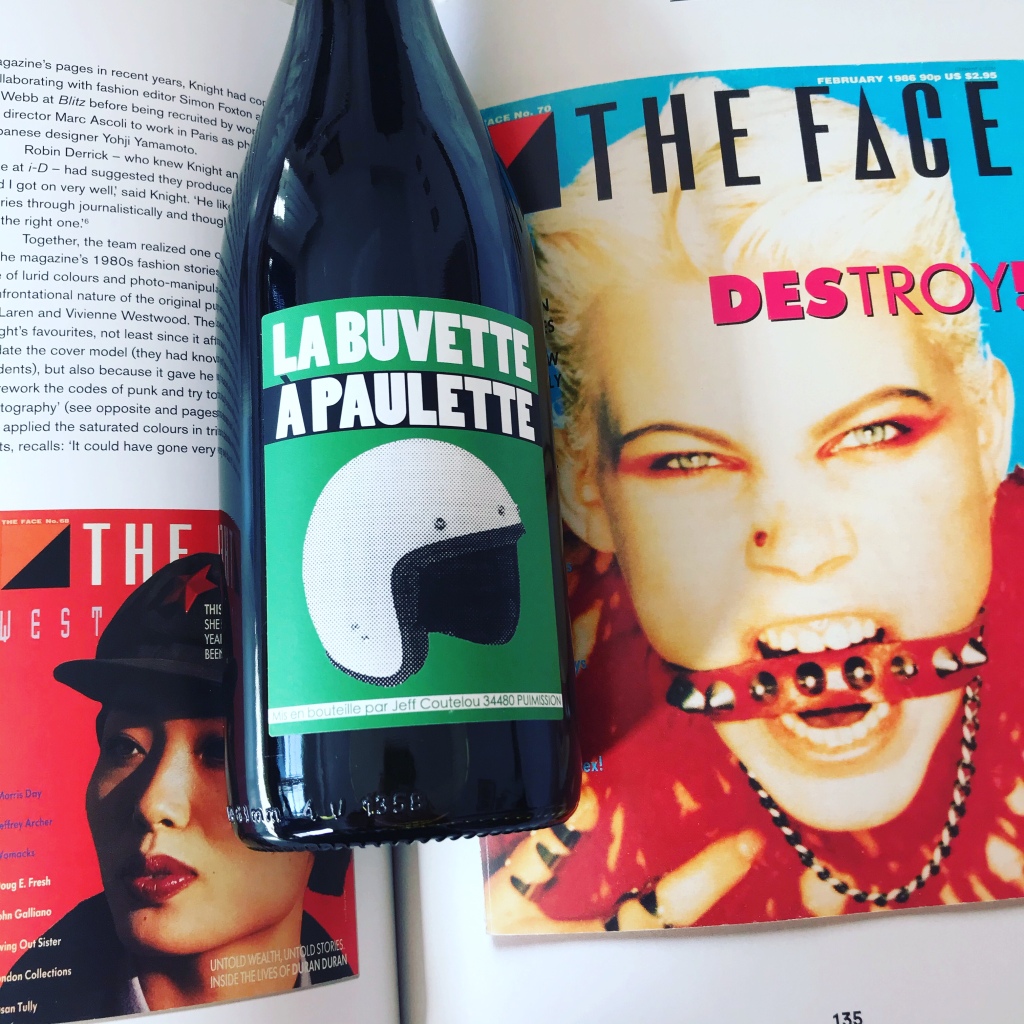
LAS CEPAS DE CURRO DEL PUERTO A ZEREX [2018], VINOS OCEÁNICOS (Jerez, Spain)
This wine comes from Bodegas Herederos, a project led by Raúl Moreno. Born in Seville, Raúl worked in London before setting up an import business in Australia and New Zealand. But he wanted to make wine back home. Not just any wine, but a replica of the wines once made in Jerez before Sherry became a fortified wine. It just happens that unfortified table wines are really taking off in the region, but this new addition (begun with the 2017 vintage) is at the forefront of exciting quality, a tremendous new discovery for me.
All of the Oceánicos wines are from single vineyards, with a terroir focus. “Curro” consists of Moscatel from Puerto de Santa Mariá and Palomino from Sanlucár, both from single vineyards (Viña Maria Luisa and Viña La Fama). All are old vines off Albariza soils, which of course is quite unusual for Moscatel. The grapes are fermented in tank as whole bunches, then the juice spends nine months on lees with no oxygenation.
The green-gold flecks in the glass already make this attractive. The bouquet is striking, like a slightly salty Chablis (the Chablis element is really noticeable for me, and I got it on another Palomino last week). The palate is clean and fresh with bags more salinity, suggestive of the white, sun-baked Jerez albariza soils. It’s also herbal (fennel is in there), with a classic textured acid finish, chalky-dry. This is very good indeed. I have another untasted Oceánicos wine (Cepas de Pacco) which I think is more expensive and also has more skin contact, but the Curro comes as highly recommended as possible.
The Oceánicos wines are brought in by Les Caves de Pyrene, this one via The Solent Cellar. There’s a worthwhile article on them on Doug Wregg’s blog, Doug Decants, on Les Caves’s web site.
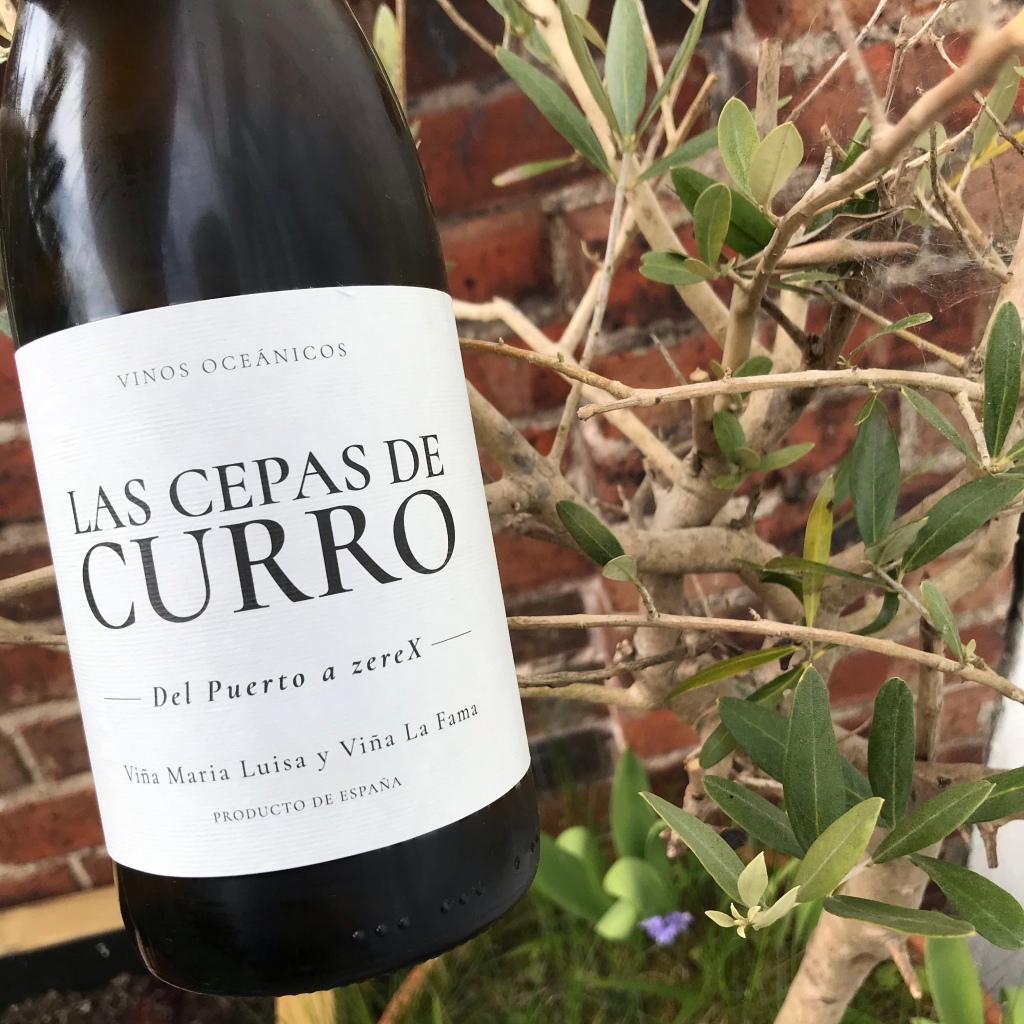
SAUMUR-CHAMPIGNY 2014, ANTOINE SANZAY (Loire, France)
Antoine has been in charge of the family domaine at Varrains, not far from Chaintré, since 2002. Over almost twenty years he has established himself as one of the most exciting producers in the Central Loire, but unlike certain other domaines, his prices remain very reasonable (let’s say by comparison to the likes of Clos Rougeard).
He credits as mentors Thierry Germain and the Foucault brothers of Clos Rougeard, whose vineyard some of his eleven hectares abut (in the sandy soils of “Les Poyeux”). Ten of those hectares are red grapes for Saumur and Saumur-Champigny, with one precious hectare of Chenin, for white wine.
This is what I would call an old school Cabernet Franc made by a man who looks younger than he probably is. Vinification is in cement tanks and the red consequently has that lovely earthy texture these vessels can give a wine. Ageing is deep underground in an enormous cool cavern. This texture supports plum and red fruits on the bouquet, the palate showing deeper plum notes. Even at almost seven years old there are still nice acids, set off by a very balanced 12.5% alcohol. There’s no appreciable tannin, just that texture. Quite magnificent, really, and one wonders when tasting a wine like this why Cabernet Franc seems to gain so much less kudos among most wine connoisseurs than Cabernet Sauvignon?
I’m not totally sure where all of my few bottles of Antoine Sanzay, red and white, came from, but I’m thinking almost certainly The Solent Cellar. They currently list an interesting (and discounted) six-bottle selection case of 2018s (two red pairs and one white pair for £159). Worth checking out. At just over £26/bottle my “prices remain very reasonable” might be an understatement.
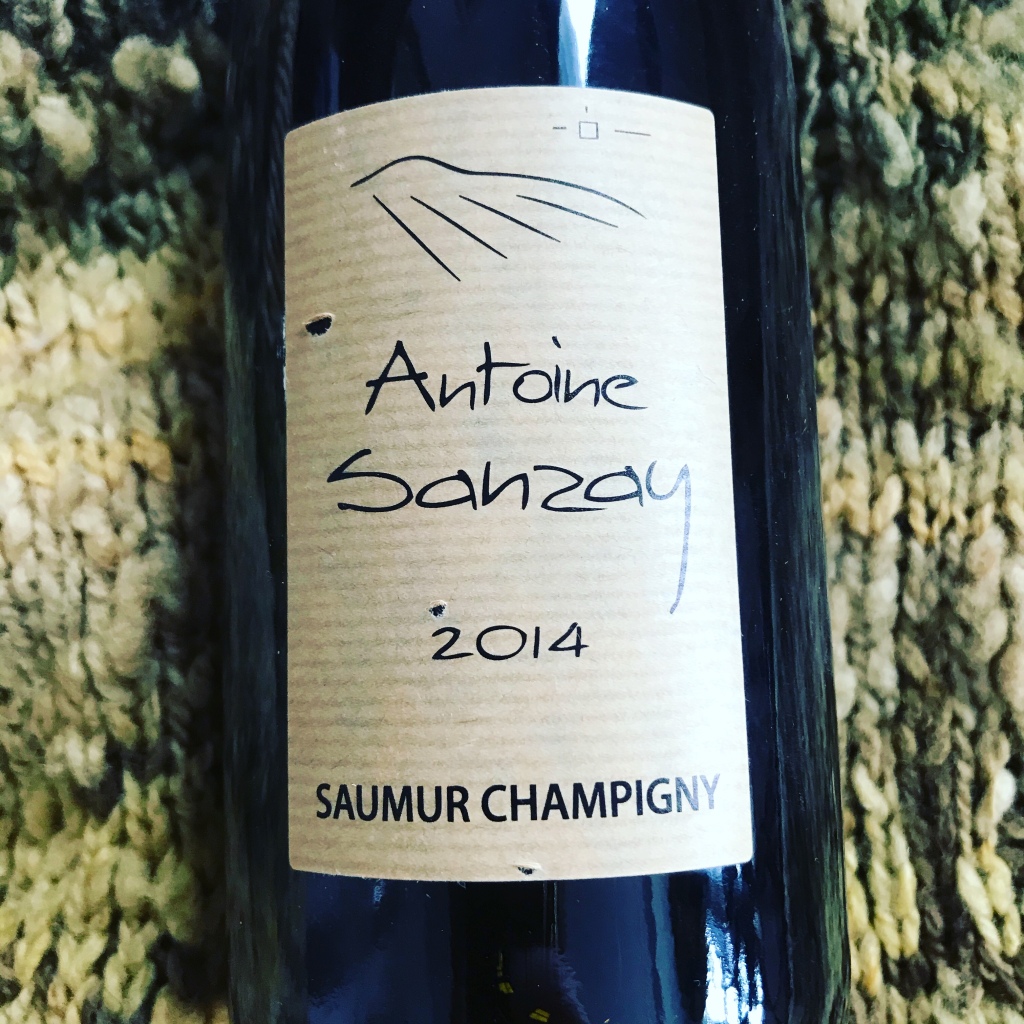

‘Glou’d together’ – very good
LikeLiked by 1 person
I really enjoyed the Sanzay SC ’14 a couple of years ago. The white was even better. You probably correct to surmise that you may have obtained this from Solent Cellar – that’s where I sourced mine.
LikeLiked by 1 person
I have one bottle of the white. I bought a really good Chenin from there last week, called “Frimas” (there’s also a more expensive cuvée). It comes from the rejuvenated Ch de Bonnezeaux. K and I tasted it and loved it. Also bought (for fun) a 250ml can of The Liberator Chenin No 5 (now sold out). Thought it was very good for a canned wine. The producer is anonymous but supposedly famous.
LikeLike